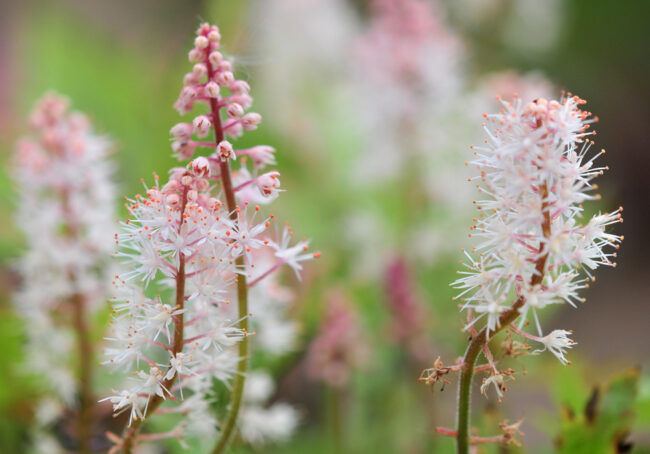
If you are looking for more natives to plant this fall in a shade garden, consider our native North American foamflower. This little gem, with the botanical name Tiarella cordifolia, blooms in late spring and looks ethereal in a woodland setting. It produces delicate white flower spikes containing tiny star-shaped flowers, and colonizes rapidly using runners to spread. Interplant it with wood anemones (Anemone nemorosa), which will flower first among the old evergreen foliage of the foamflowers. Just as the anemone blooms begin to fade, the foamflowers will open and produce new foliage.
Plant foamflowers under evergreen trees, as they like a slightly acid soil. In the wild they grow in damp woodlands and along stream banks where it is moist but not constantly wet.

The Allegheny foamflower is a 6- to 10-inch-tall wildflower that forms 1-foot-wide to 2-foot-wide clumps in U.S. Department of Agriculture plant hardiness zones 3 through 8. The leaves are shaped like maple leaves. Another variety, ‘Brandywine,’ has leaves with bright red veining. The cultivar T. wherryi, (pronounced WHERE-ee-eye) has leaves with a reddish central blotch, is more compact, and spreads more slowly. If you prefer pinkish flower spikes, try ‘Oakleaf,’ which has foliage shaped like oak leaves, as the name suggests.
Seed capsules containing the tiny black seeds will ripen about four weeks after the foamflower bloom ends. These seeds can be sown in a new spot immediately or you can lift mature clumps of Tiarella in the fall and gently separate the crowns of the plants to transplant offspring in a new location. Plant divisions 12 inches apart and mulch well. Water during periods of drought, add humus to the soil, and these plants will provide a handsome and rewarding groundcover.







